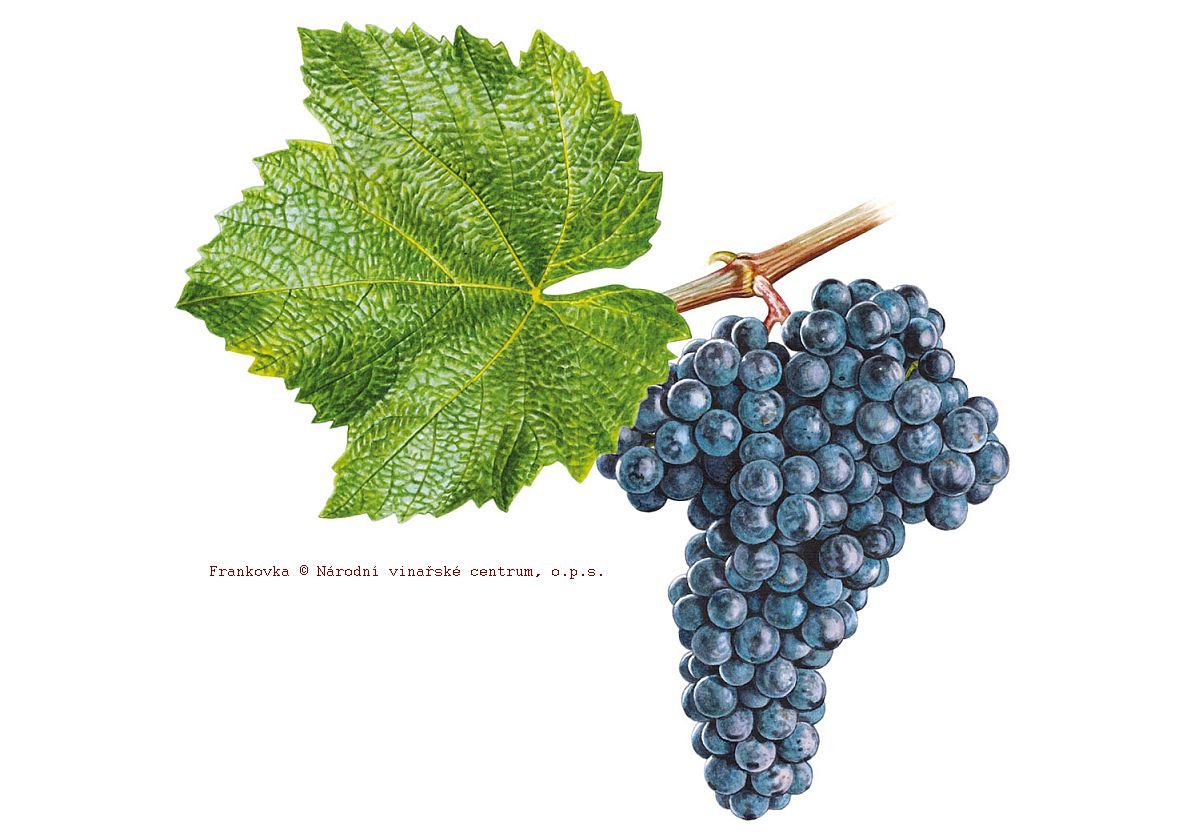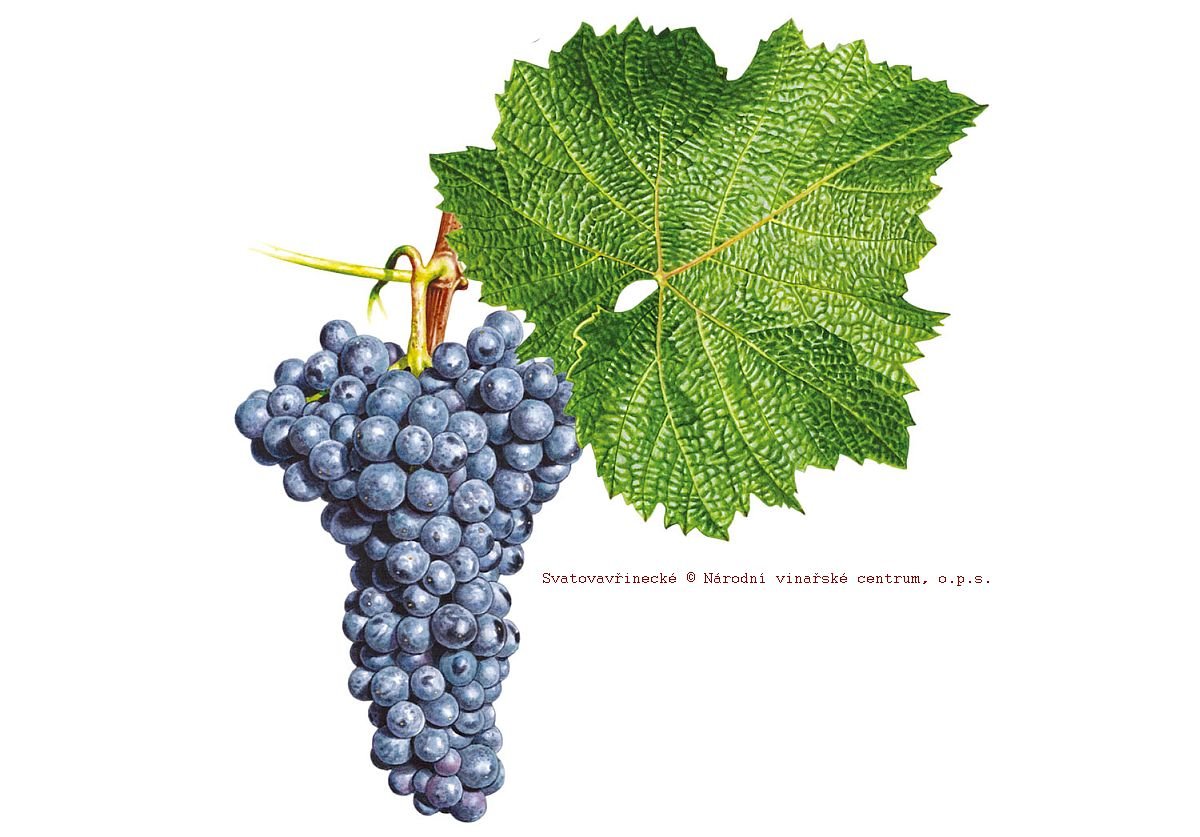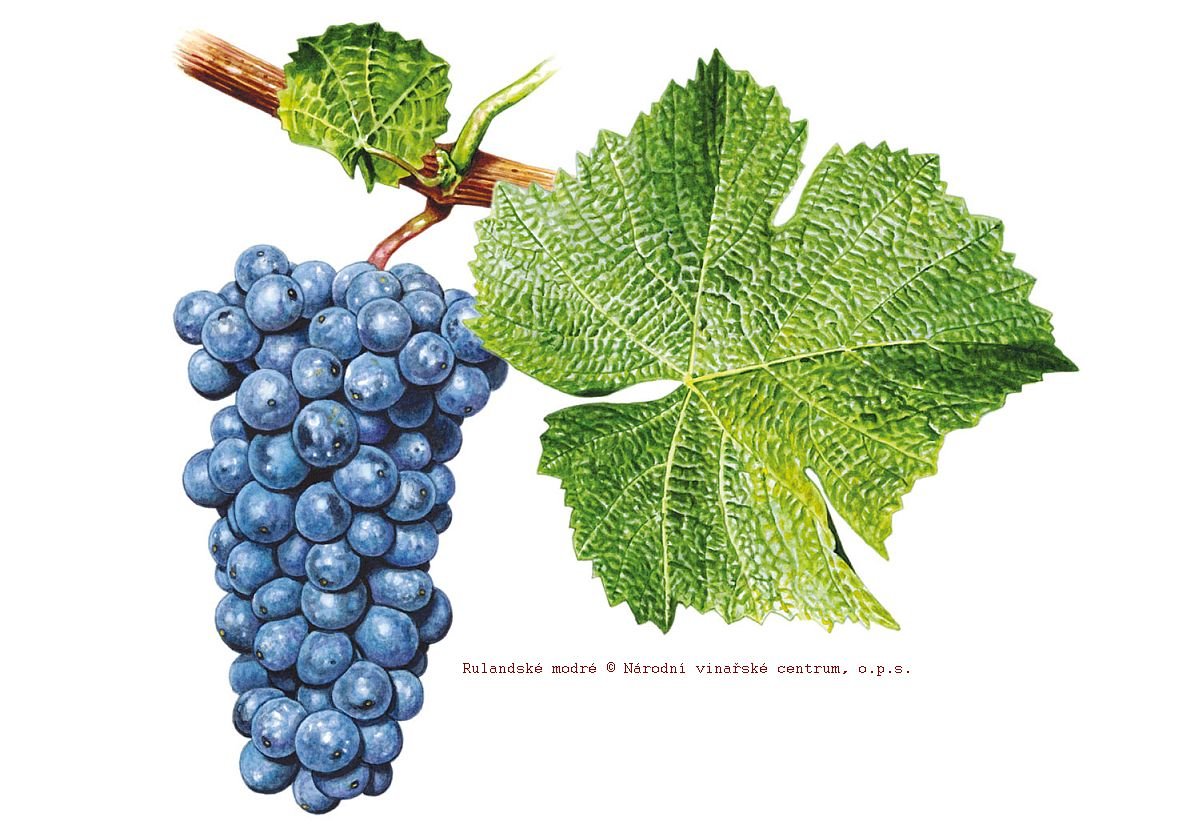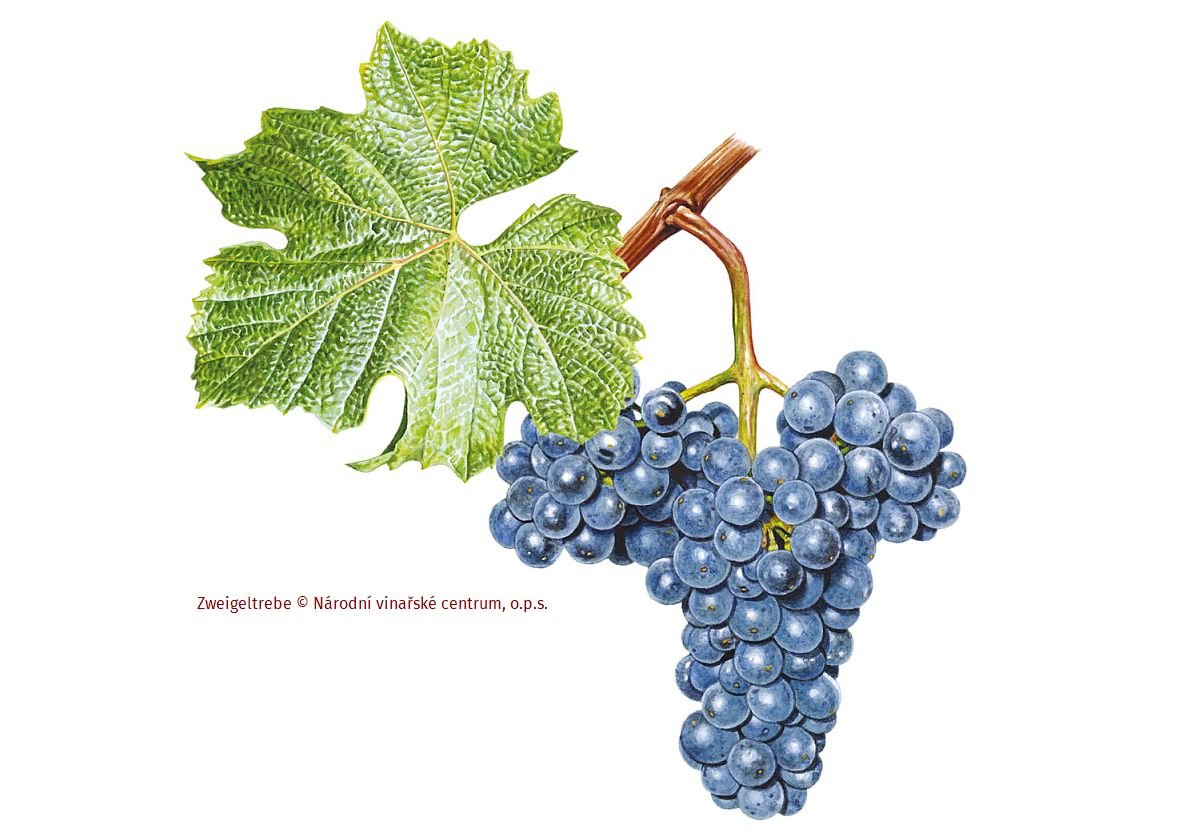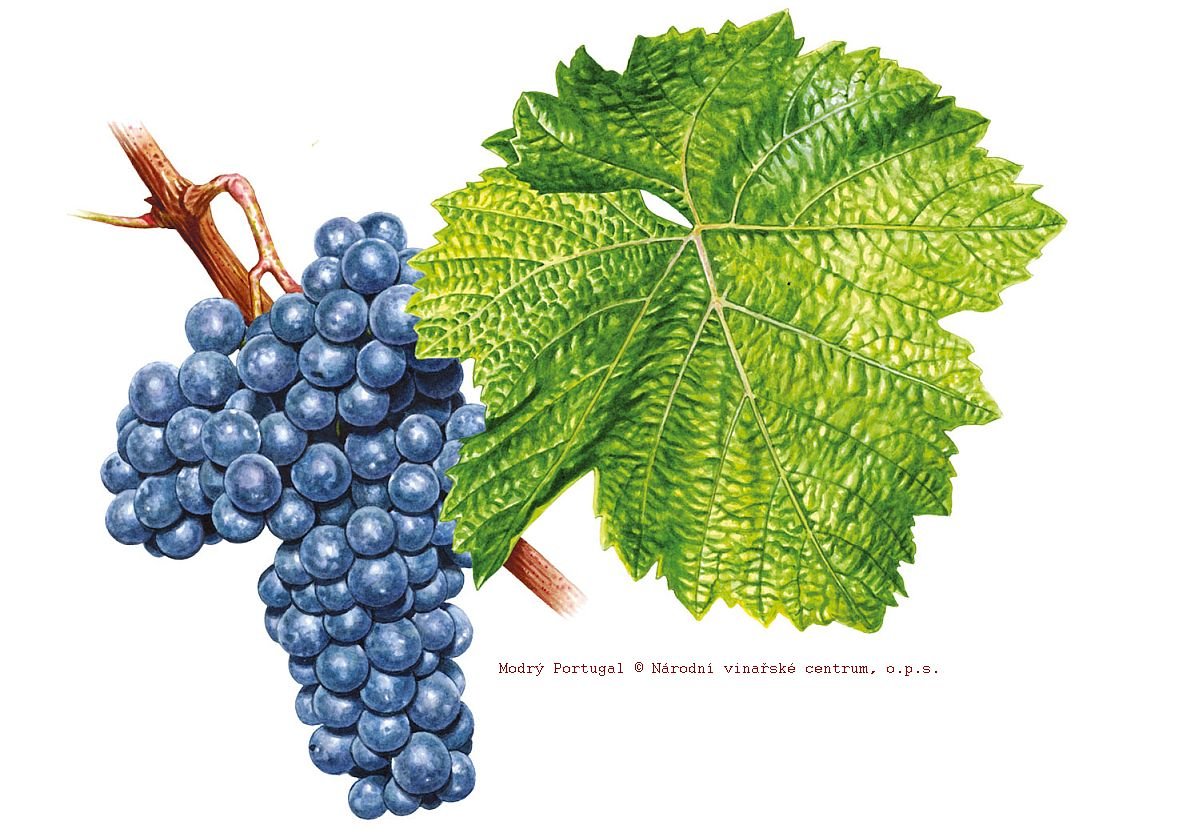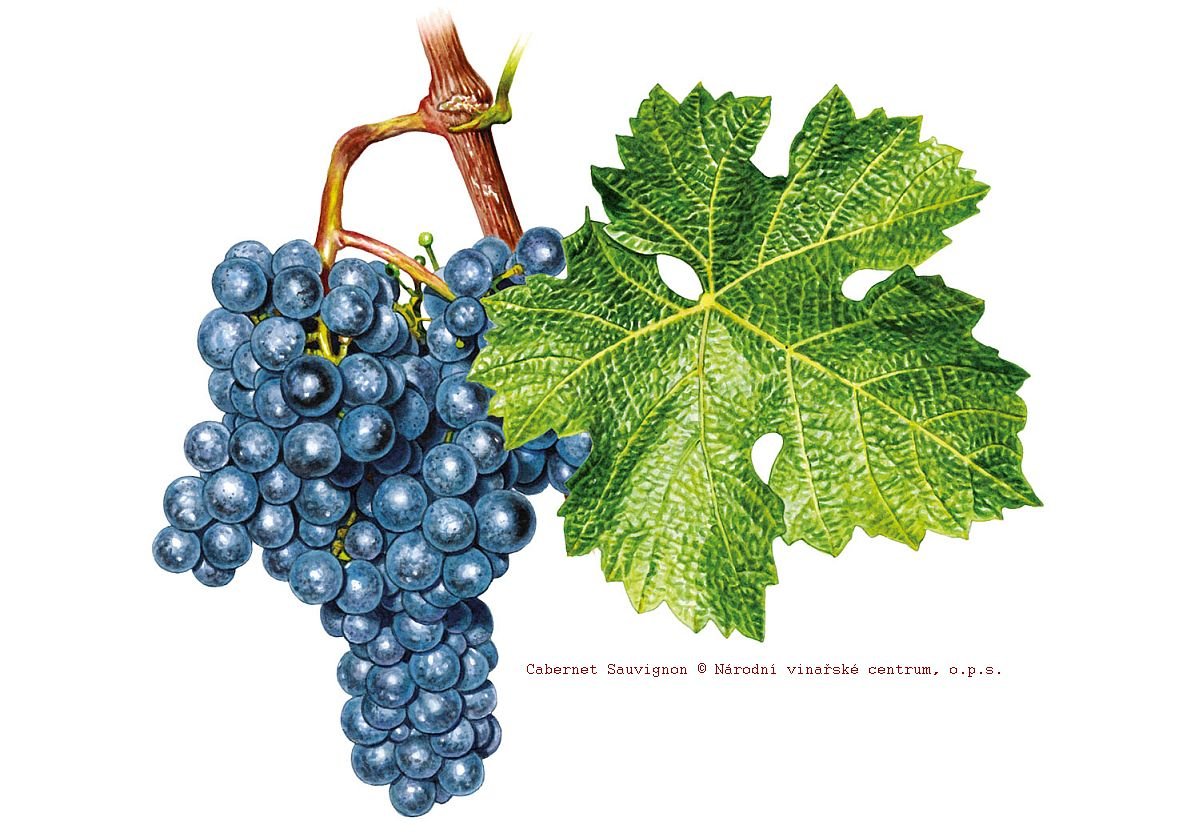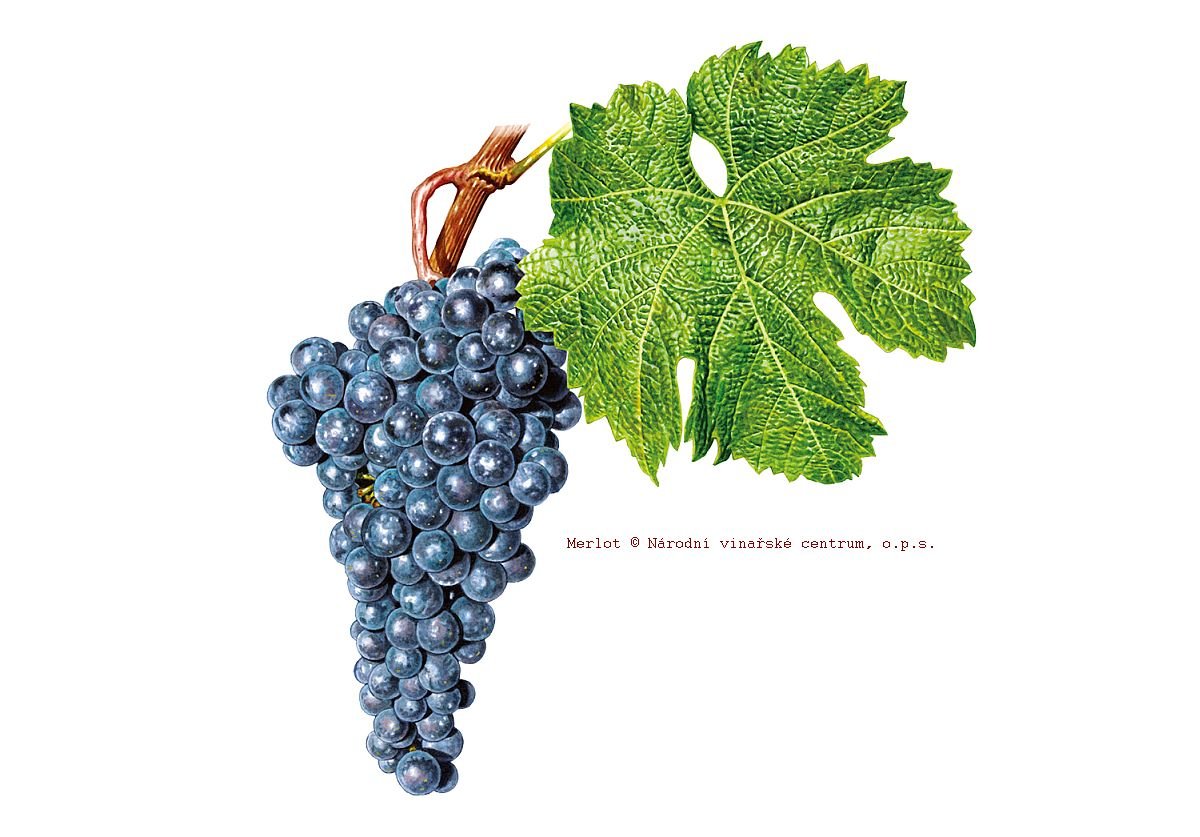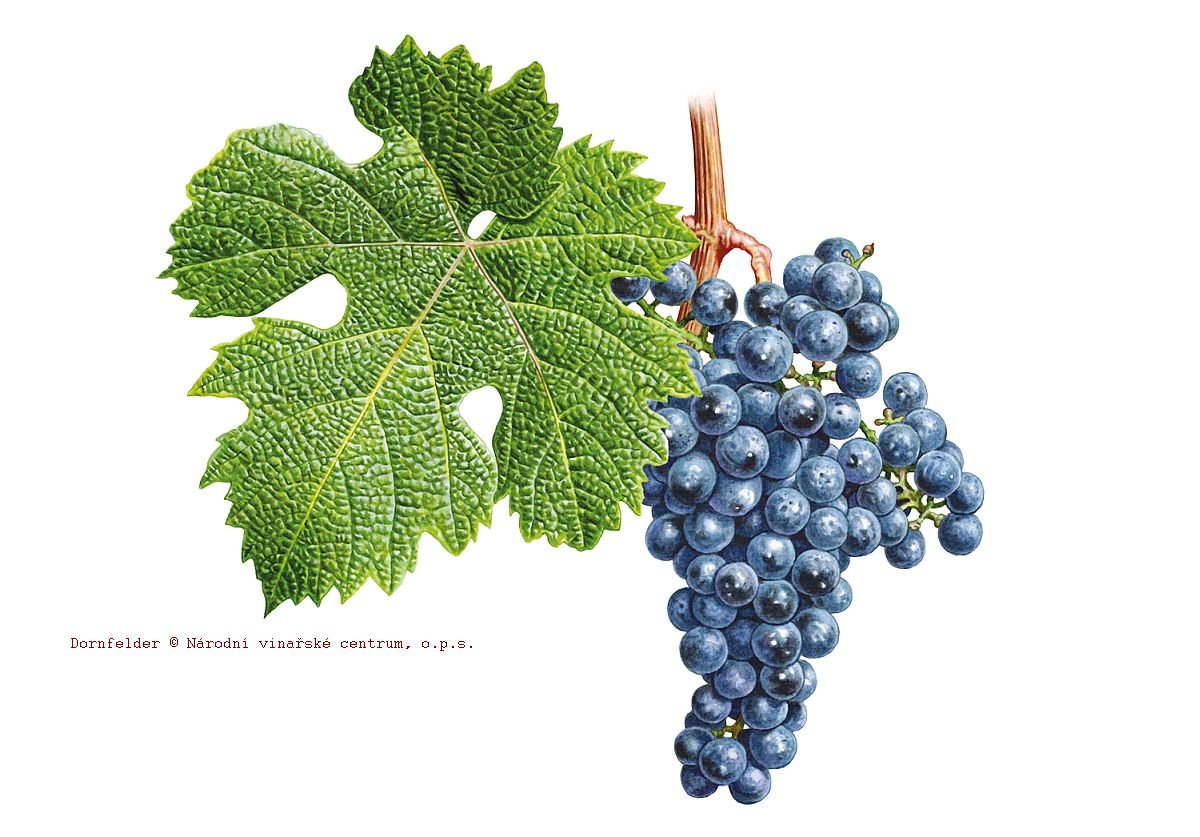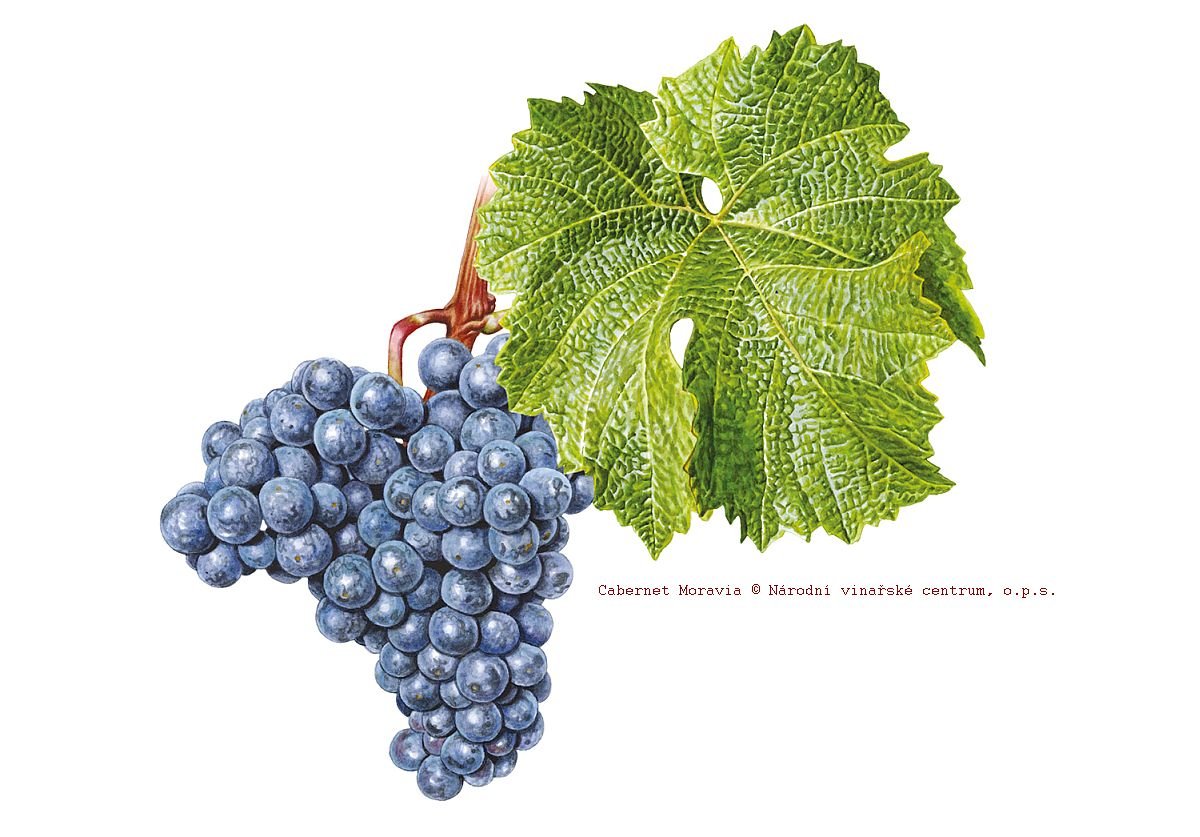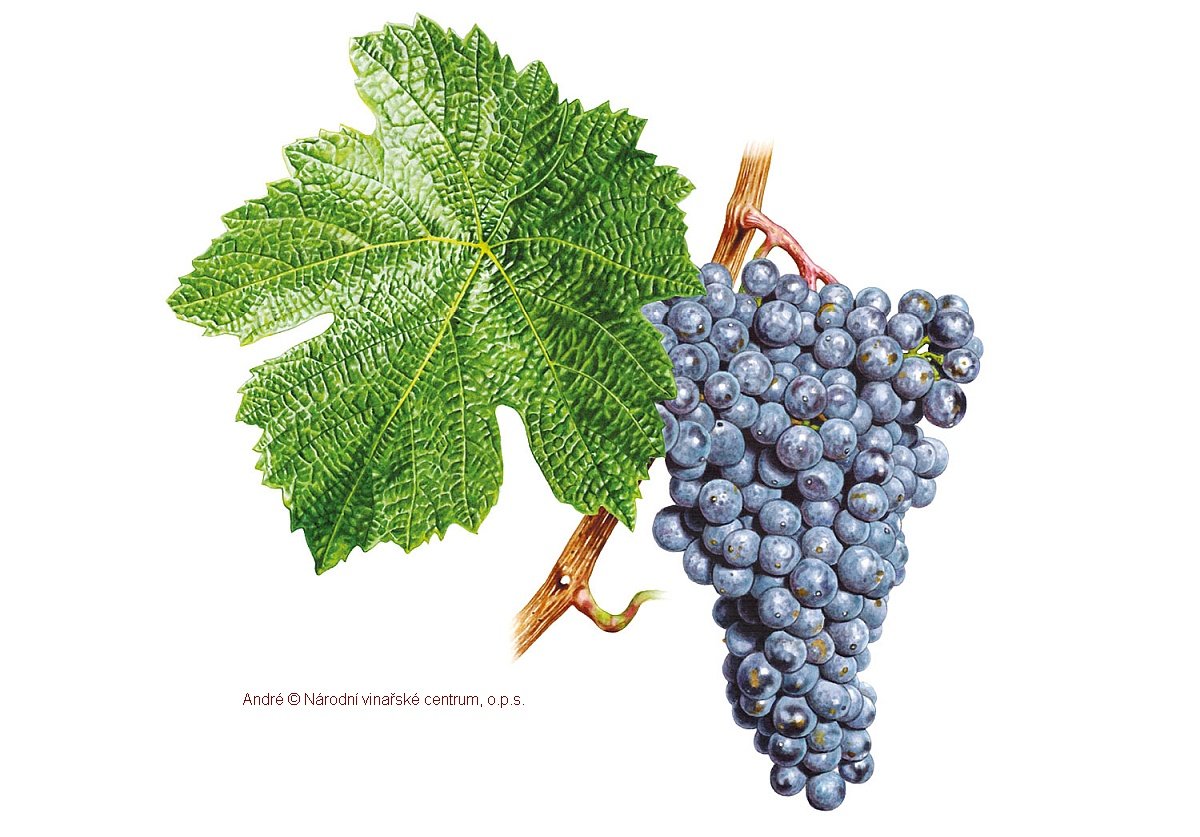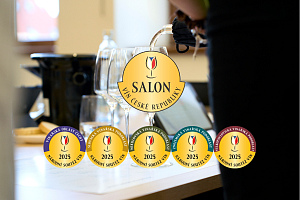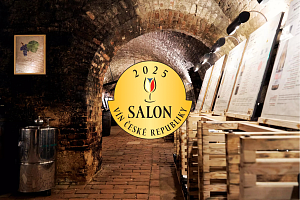Main red varieties
Varieties for the production of red and rosé wines (according to 31.12.2023)
Frankovka/Lemberger, Blaufränkisch
In the best vintages, Blaufränkisch wines are among the truly great wines of the Czech Republic, with a distinctive velvety texture. They have a dark, ruby colour, with younger wines having a distinctive combination of pronounced acidity and tannins, while the more mature wines gain a complex, spicy palate, with touches of blackberry and cinammon. Depending on the ripeness of the grapes, Blaufränkisch wines are either suited to everyday food or, in the case of mature wines from a good vintage, go superbly with roasted game or poultry and blue-veined cheeses.
Year of entry in the National Register of Plant Varieties: 1941 | Origin: probably Austria, in Germany it is synonymous with the Lower Austrian municipality of Limberg. It may also come from Croatia or France, but most likely from Slovenia, where it is documented before 1750. It is a random crossing between varieties Blaue Zimmettraube × Heunisch Weiss | Current area in the Czech Republic: 935 ha (5.3%)
Svatovavřinecké/Saint Laurent
Saint Laurent wines have gained much favour in this country, due to their deep crimson colour, varietal aromas of sour cherry, plum jam and sometimes even blackcurrant and distinctive tannin structure. You can taste the newly-released, young Saint Laurent wines for the first time on the 11th November after harvest as St. Martin’s wine; it is the Czech answer to Beaujolais Nouveau. The wines are usually medium to full-bodied. In the case of bottle-aged wines, their striking character is transformed into a velvety opulence. Saint Laurent suits red
meat, game, St. Martin’s goose with flapjacks and soft, blue-veined cheeses.
Year of entry in the National Register of Plant Varieties: 1941 | Origin: France or Lower Austria, one of the parents is Pinot Noir | Current area in the Czech Republic: 797 (4.5%)
Rulandské modré/Pinot Noir
Wines made from Pinot Noir tend to have a colour between pale ruby and brick red with an amber rim encircling the sides of wine in the glass. Their bouquet and richness excel most especially after a maturation lasting several years, when they bring to mind the scents of leather, smoke, strawberries and dried plums. The refreshing acidity and light, smooth tannins are seamlessly integrated. Ageing in bottle as well as in barrel benefits the quality of Pinot Noir enormously. It matches perfectly with roasted meat, feathered game, cheeses with white mould, and dishes prepared from mushrooms or bitter chocolate.
Year of entry in the National Register of Plant Varieties: 1941 | Origin: France, likely a random crossing of Meunier × Traminer or bud mutation of Pinot within the group | Current area in the Czech Republic: 723 ha (4.1%)
Zweigeltrebe
Wines from the Zweigelt variety have a dark garnet colour with tinges of violet and can boast a bouquet of various spices and fruits, very often reminiscent of berry fruit. The nose and palate of the youthful wines become refined relatively quickly. The wines, however, need to mature in wooden barrels. After a year of ageing, the pleasing nose and smooth velvety finish come as a pleasant surprise. On the palate, we encounter blackberries, sour cherries or maybe cherry compote and forest fruits. Red and rosé wines from this grape variety can accompany a range of grilled meat dishes, strong cheeses or even pasta.
Year of entry in the National Register of Plant Varieties: 1980 | Origin: Austria, Saint Laurent x Blaufränkisch | Current area in the Czech Republic: 669 (3.8%)
Modrý Portugal/Blauer Portugieser
The most typical characteristics of wines from this variety are their pale ruby colour, delicate, occasionally even floral nose and pleasing velvety palate with its lower acidity and tannin content. In the mouth, we discover tones of both violets and peony flowers, freshly cut hay, cherries and cassis. Wines from this variety are very food-friendly and can combine with a wide spectrum of dishes. Italian cuisine is often the perfect accompaniment for this variety, especially a variety of pasta dishes. Blauer Portugieser is the first variety from which Saint Martin’s wines began to be made, and they go wonderfully well with the traditional roast goose.
Year of entry in the National Register of Grape Varieties: 1941 | Origin: Probably from Slovenia (Lower Styria). It is a crossing between varieties Blaue Zimmettraube × Grüner Sylvaner. | Current area in the Czech Republic: 466 ha (2.6%)
Cabernet Sauvignon
The Cabernet Sauvignon variety gives to a wine a deep colour with a tinge of blue when young, and developing an ever-stronger garnet colour with age. The typical nose is of blackcurrants, which is accompanied by the aroma of cherries, blackberries, marmalade, tobacco and cedar wood, depending on the ripeness of the grapes. The wine is powerful, with fantastic length, and after some bottle ageing, the result is a soft and velvety palate. These full-bodied, aromatic wines go extremely well with meat dishes, especially a joint of roast-lamb, beef steaks, turkey or spicy food with a piquant sauce. Rosé wines from this grape also go hand-in-hand with grilled meats and make for a pleasurable experience on warm summer evenings.
Year of entry in the National Register of Grape Varieties: 1980 | Origin: France, likely crossing between Cabernet Franc × Sauvignon Blanc. | Current area in the Czech Republic: 225 ha (1.3%)
Merlot
Wines from the Merlot cultivar have a deep garnet colour and a delicate aroma featuring overripe blackcurrant, combined with aromas of black cherries, plums and figs. Moreover, after a longer spell maturing in the bottle, the tones of tobacco, truffles, coffee or chocolate will also appear. The wines‘ taste is characterised by its lower acidity, an ample and round palate with a smooth texture. Due to their quaffability and suppleness, Merlot wines have found great popularity among consumers. While they may be drunk on their own, they also pair brilliantly with delicate patés, venison ragout, veal kidneys and dishes featuring the pronounced taste of tomatoes and those prepared from feathered game or with Emmental cheese.
Year of entry in the National Register of Grape Varieties: 2001 | Origin: France, it is a random crossing of varieties Madlenka modrá (Madlenka Blue – no longer existing variety) × Cabernet Franc. | Current area in the Czech Republic: 186 ha (1.0%)
Dornfelder
The Dornfelder grape variety produces fine wines with subtly aromatic flavours. It is well suited to the production of "quality wines" and "wines with special attributes", and it may also be cultivated directly for the consumption of the grapes themselves. The wine‘s deep-crimson hue is the variety’s most striking feature. On both nose and palate, we can find for example cranberries and other forest fruits, as well as hazelnuts, while wines made with less ripened berries will also feature notes of green peppers. When the wine is still youthful, it marries well with pasta dishes, while the fuller-bodied wines are best served with rich or spicy meat dishes, barbecues, game and strongly flavoured mature cheeses.
Year of entry in the National Register of Grape Varieties: 2004 | Origin: Germany, (Pinot Précoce Noir × Trollinger) × (Blauer Portugieser × Blaufränkisch). | Current area in the Czech Republic: 178 ha (1.0%)
Cabernet Moravia
The Cabernet Moravia grape variety, with origins firmly in Moravia, gives wines of a dark garnet appearance, redolent with the aroma of blackcurrant, so characteristic of the Cabernet family of cultivars. After a spontaneous malolactic fermentation, which thereby reduces the acidity content, the wine is nicely balanced and full-bodied, smooth, with well-structured tannins and a lengthy finish. With maturation, its structure and balance intensify even more. It is well-suited for ageing in barrique oak barrels and it makes a fine accompaniment to game dishes, steaks, dark meat in thick creamy sauces and mature blue-veined cheeses.
Year of entry in the National Register of Grape Varieties: 2001 | Origin: Morava Wine region, a crossing between Zweigelt × Cabernet Franc. | Current area in the Czech Republic: 174 ha (1.0%)
André
The harmonious wines coming from this native Moravian variety are reminscent of the deep and full scent of sour cherries, black cherries and ripe blackberries, as found in southern types of wine. If the grapes are left to ripen very well, the wines will have a deep garnet colour, will be full and round, and after maturing in barrel, the smooth taste of ripe tannins will develop. André is served with game, dark meat, hearty dishes or mature blue cheeses.
Year of entry in the National Register of Grape Varieties: 1980 | Origin: Morava Wine region, Blaufränkisch × Saint Laurent. | Current area in the Czech Republic: 166 ha (0.9%)
Related
